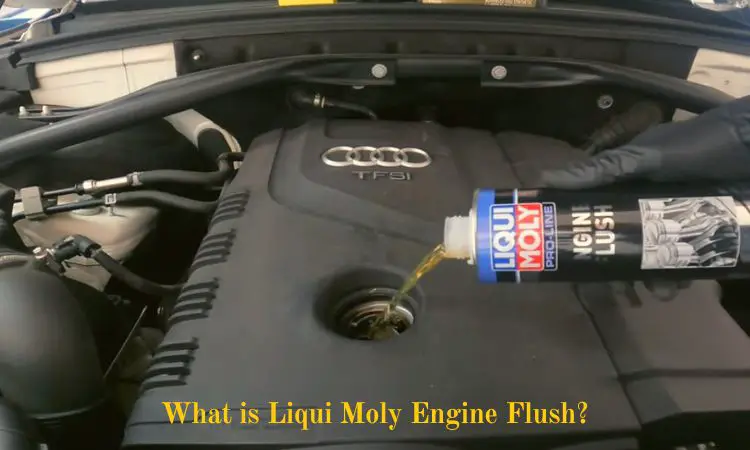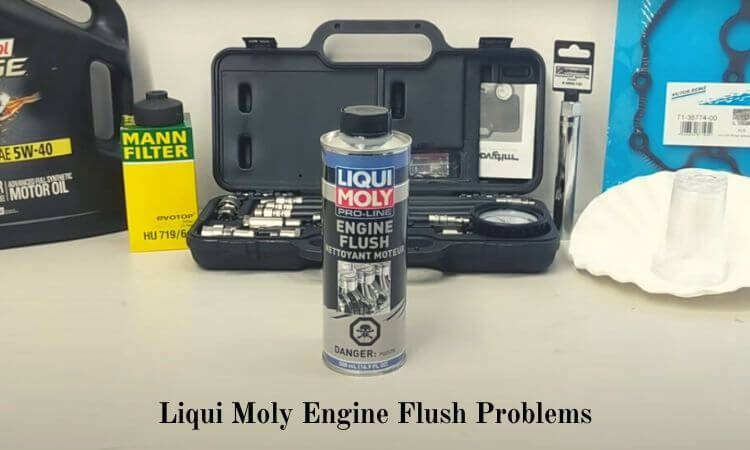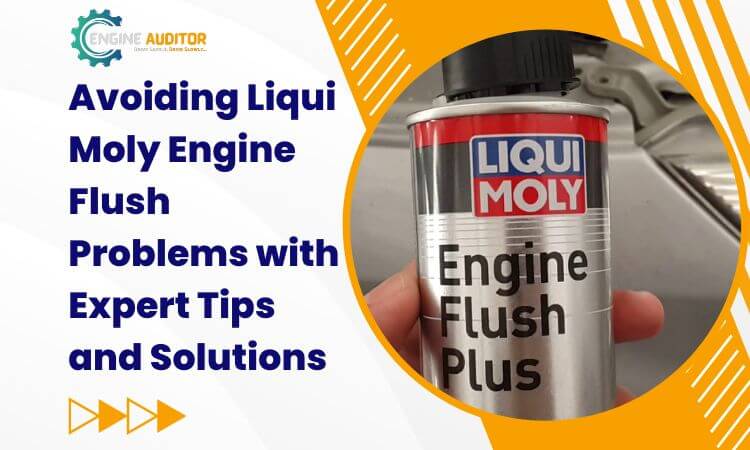Hey there! This post contains affiliate links to products. We may receive a commission for purchases made through these links. But it never influences our product selection process.
Maintaining a healthy engine is necessary for the best vehicle performance. Using an engine flush can be an effective solution. Liqui Moly Engine Flush is a well-known product designed to thoroughly clean and remove harmful deposits from your engine. However, you may need some help with using it. However, you can prevent such issues to ensure the best vehicle performance.
If you use the Liqui Moly engine flush properly, you can minimize the risks of arising issues. First, prepare your engine and measure the oil level using an oil gauge. Now add the Liqui Moly engine, flush the recommended quantity, and let the engine Idle for 10 minutes. Now drain the engine flush entirely, remove the oil filter, and add new oil up to the recommended level.
For more clarity, continue reading my blog. I will explore the common problems and the ideal way to prevent such issues using the Liqui Moly engine. Let’s explore.
What is Liqui Moly Engine Flush?

LIQUI MOLY Engine Flush is a potent cleaner designed for engines with high mileage. It effectively breaks down and removes deposits, sludge, and dirt particles from the engine. It can enhance the engine’s performance and reduce oil consumption and emissions. It is safe to use as it contains no solvents and so it may not harm the engine’s seals and gaskets.
It works by dissolving sludge, lacquer and isolating solid particles and liquid contaminants in gasoline and diesel engines. Improving the combustion process restores the engine’s performance and prevents the corrosion of unprotected metal surfaces.
However, it is essential to note that some engine flushes, including LIQUI MOLY, can potentially cause damage to the engine. These flushing additives may harm engine seals, leading to costly repairs if an oil leak occurs. They can also damage engine bearings, turbochargers, and other oil-lubricated components. Therefore, caution should be exercised when considering engine flush products.
Note: Are you looking for ways to change Hyundai Sonata transmission fluid? Discover a hassle-free guide for a smoother ride today!
Does Liqui Moly Engine Flush Work?
Liqui Moly engine flush is an additive designed to remove impurities and deposits from the engine. When added to the engine oil, it breaks down sludge and carbon deposits. Once separated, they are removed along with the old oil and oil filter. The engine might run more smoothly when you use it, though. You may also experience reduced noise and better acceleration.
Some users claim that it reduces the engine oil temperature, which may prevent it from overheating. Its microparticles are smaller than dust particles passing through the air and oil filters. This engine flush has proven effective in improving engine performance.
Experiencing issues with 1993 Ford F150 fuel injectors not working? Troubleshoot and resolve the problem with our comprehensive guide, restoring optimal engine performance and fuel efficiency.
Liqui Moly Engine Flush Problems

Liqui Moly Engine Flush is a product designed to clean and remove contaminants from the engine, promoting better performance and prolonging its lifespan. However, there have been reports of potential problems associated with using Liqui Moly Engine Flush.
Insufficient Engine Lubrication:
One of the potential problems associated with using Liqui Moly Engine Flush is the possibility of insufficient engine lubrication. It can happen if the flush needs to be properly rinsed out before adding new oil. If any residual flush remains in the engine, it may mix with fresh oil. So, it increases dilution, and lubrication properties may decrease. If it happens, you may experience poor lubrication, affecting the engine’s performance.
Contaminated Engine Oil:
Liqui Moly Engine Flush is meant to remove contaminants from the engine. But in practice, there have been reports of engine oil becoming contaminated after using the product. It can happen due to incomplete removal of the flush. Incomplete removal of the flush may create debris or residual chemicals.
Sludge Buildup in the Engine:
It is essential to follow the instructions strictly for optimal performance. If you violate the instructions and let the liqui moly engine flush for a longer time, it may cause sludge formation in the engine. If the sludge builds up, it will restrict oil transportation and may damage several engine components.
Clogged Oil Passages:
Another problem reported by the users is clogging in the oil passage. Inadequate rinsing of the liquid moly engine flush may develop the residue that causes oil passage clogging. If this issue persists, the residue may become hardened and restrict the free flow of oil. Over time, you may experience damage to engine components.
Engine Overheating:
Using Liqui Moly Engine Flush incorrectly or leaving any residues in the engine can potentially contribute to engine overheating. Improper lubrication, clogged oil passages, and restricted oil circulation may increase friction. Increased friction among the engine parts generates heat, and you may experience engine overheating.
Note: Discover expert tips and step-by-step guides for Ram 1500 and Acura transmission fluid change, ensuring smooth shifts and optimal performance for your trucks and vehicles. Drive with confidence today!
How to Use Liqui Moly Engine Flush?
To use Liqui Moly Engine Flush, follow these step-by-step instructions:
Step 1: Ready Your Engine
Before using the Liqui moly engine, ensure your engine is ready to flush. Never use the flush on a cold engine. First, ensure that the engine is warm but not hot. It helps the oil flow more efficiently during the flush.
Step 2: Measure the Oil Volume
Once the engine is ready, check the engine oil volume in your vehicle using the engine oil gauge. I recommend the Dorman 7-153 Oil Pressure Gauge Kit for measuring engine oil volume. The Liqui Moly Engine Flush is efficient for six liters of engine oil.
Step 3: Add the Engine Flush
Now, open the can of Liqui Moly Engine Flush, which is 300 ml. Pour the entire contents into the engine oil filler cap.
Step 4: Idle the Engine
Once the engine is running, let it idle for five to ten minutes. It allows the Engine Flush to circulate and clean the engine’s internal parts adequately.
Step 5: Drain the Oil
After idling, turn off the engine and drain the oil completely. Ensure you have a suitable container to collect the old oil.
Step 6: Replace the Oil Filter
Check the oil filter and, if necessary, replace it. First, remove the old oil filter and replace it with a new one. It helps maintain the engine’s cleanliness and performance. You can use either of the recommended ones, according to your engine manufacturer. However, I recommend FRAM Ultra Synthetic Automotive Replacement Oil Filter. It is compatible with many engines and performs excellently.
Step 7: Add New Oil
Pour the recommended amount of fresh engine oil into the engine using the appropriate grade specified by your vehicle’s manufacturer.
Step 8: Check for Any Residue
If a small amount of Engine Flush residue remains in the engine, there is no need to worry. Liqui Moly products are tested to be safe, even if a little bit stays behind.
If your vehicle has low oil, driving is not advised. If your vehicle has low oil, driving is not advised. Read this article to understand the risks and consequences, and learn how far can you drive on min oil Audi.
Alternatives to Liqui Moly Engine Flush
You may find hundreds of Engine flush products on the market. But when it comes to the best alternatives to Liqui Moly, I have listed the two that are affordable but provide matching results.
Lubegard 98901 Engine Flush:
This premium synthetic blend contains special detergents and dispersants to clean gums, varnishes, and deposits from your engine. It frees sticky valves and lifters and improves oil circulation. The engine flush does not contain harmful solvents that may damage engine seals or gaskets. Suitable for all diesel and gasoline engines.
Rislone High Mileage Engine Flush:
Specifically designed for high mileage engines, this engine flush features super concentrated agents that actively clean deposits. High-quality base stock helps reduce sludge and varnish on cylinder heads without harming engine seals. It is compatible with gasoline and diesel engines and suitable for conventional and synthetic motor oils.
Note: If you are experiencing 5-3 Vortec oil pressure problems, it’s crucial to address them promptly. Read this comprehensive guide to diagnose and resolve issues, ensuring optimal engine performance and longevity.
Frequently Asked Questions (FAQs):
Is Liqui Moly engine flush good or bad?
How often can you use Liqui Moly engine flush?
Can you drive on Liqui Moly engine flush?
Are oil flushes necessary?
Conclusion
Liqui Moly Engine Flush is a valuable product for addressing common engine problems. It effectively cleanses the engine, removing harmful deposits and improving its overall performance. However, using that engine flush could have some unfavorable effects.
You will never encounter such strange problems if you follow the instructions for using Liqui Moly Engine flush, so do not worry. So, while using it, ensure you have properly used it to enjoy its maximum performance.

